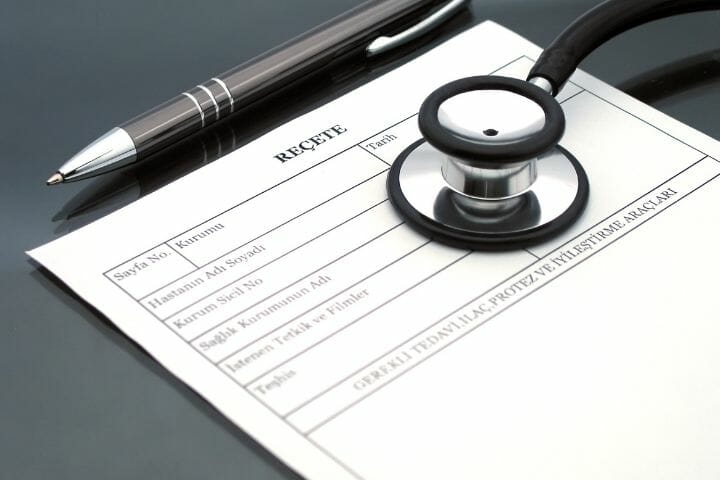Health literacy is the ability to understand and act upon health-related information. Let us try to understand the need for accessible health information in this article
Contents
Health literacy is information about the services and aspects related to health. Through health literacy, people can make decisions related to health properly.
There are various aspects of health literacy like digital health literacy, organizational health literacy, personal health literacy, and numeracy.

Disabled people suffer from barriers like physical barriers, attitudinal barriers, and financial barriers. You will explore all these aspects in this article from team Respect Caregivers.
What Is The Need For Accessible Health Information?
Through health literacy, a person can make appropriate health decisions. It is necessary to promote health literacy for a healthy community.
Healthcare Institutions and public health systems play a vital role in health literacy. Even people who are otherwise literate can face various problems in health literacy. They may go through multiple challenges such as
- They may suffer from different complicated conditions, and they need self-care, which they don’t understand.
- They are diagnosed with a rare and severe illness due to which they are scared, and their morale is low.
- They don’t know about the medical terms or how it works.
- They are not able to make health care decisions.
- They may predict risks about making a healthcare decision.
To overcome all these situations and circumstances, it is essential to provide useful health information. Thus accessible health information is needed for the public to make the right decision at the right time and avoid any stressful situation.

What Are The Ways To Provide Accessible Health Information?
Try to promote universal access to health information:
Try to set guidelines about the design and access to the information. You can state the guidelines that constitute health information. You can change the way information is being delivered. You can redesign the material to match consumer preferences.
You can encourage health care providers to provide understandable material to everyone. This can be useful for the patients and their family members. Even in the era of the internet, providers should spread reliable information accessible to all the patients and family members.
Try to provide health professional standards and health information:
The national standards about health literacy skills have not been adopted widely among primary and high school students. They do not provide proper communication skills. Health professionals can help everybody to improve their skills and way of communication.
Public insurers can model improvements and innovations:
Public insurance can provide handy material for people with fewer literacy skills using effective ways. Delivering health information can help Medicaid beneficiaries, which can also offer models for employers and private insurance.
They can address health literacy as part of various disparities initiatives:
Health literacy should be a priority in the disparities initiatives. Linguistic and cultural competence is a topic that should be addressed when people are developing health material.

What Are The Different Aspects Of Health Literacy?
Personal health literacy:
Personal health literacy is how much people understand and use services and information available to make appropriate health decisions.
Various examples of personal health literacy include understanding the consent forms, doctors’ directions, and the instructions mentioned on prescription drugs. It also means the ability to understand the healthcare system appropriately.
Organizational health literacy:
Organizational health literacy is how much organizations help individuals to understand, research and use health-related information and services to make decisions for themselves and other people surrounding them.
One of the examples of organizational health literacy is using the teach-back method to understand how much patients understand medical terms and to provide services and communicate in a proper language format based on the feedback.
Digital health literacy:
Digital health literacy is how much people can research health information from electronic sources and apply this knowledge to address health problems or solve health-related issues of a person.
Various examples of digital health literacy include communicating with your healthcare team electronically, the ability to understand proper health information available online, using different health and wellness apps, and understanding your electronic health record.
Numeracy:
Numeracy is quantitative literacy in health literacy. It consists of various advanced problem-solving skills. It also includes mathematical problem-solving skills. These skills are essential to draw an appropriate conclusion to a given data.
Various examples of numeracy include predicting the blood sugar readings, taking the appropriate dosage of medication example (taking one capsule in the afternoon), understanding the nutrition information label mentioned on the packets of the products and medicines. Evaluating how much dose is necessary for a particular person.

Why Is Health Literacy Significant?
Health literacy involves various skills like calculating a correct dosage of medication and includes specific skills like checking nutrition labels on food items.
Through the skill of reading nutrition labels, we understand whether that food is allergic or has enough nutritional content and does not contain excess sugar, salt, or unhealthy fats. People who have lower health literacy may suffer from problems and are known to face health problems as a result.
People who have fewer literacy skills are known to :
- They are known to skip preventive services.
- They are more likely to make certain medication errors.
- They aren’t able to manage chronic diseases.
- They have poor health outputs like emergency visits and hospital stays.
People who have higher literacy rates are known to make correct health decisions. This makes them healthier and also increases their life expectancy.
How Is Health Literacy Addressed?
Communication is the prominent way through which people can understand various health-based information. When they understand the health-based information correctly, they can make correct health decisions.
Health literacy can be addressed in the following ways:
- Make sure that people can efficiently address the health information they require.
- People can create proper clearing houses about information about health literacy for the health professionals.
- Provide repetitive training to health professionals to provide health-related information to the people.
- Reviewing health material properly ( like understanding the medication instructions and different insurance forms) with the members to make sure they understand the critical information and take appropriate actions about it.

What Are The Ways To Improve Health Literacy?
Having health literacy is essential as it can reduce various healthcare costs and improve the community’s health. When people are aware of the health care problems, they address them properly and find ways to overcome them. Improving health literacy won’t happen in a couple of years.
Research states that 50% of Americans adults have low health literacy. Understanding and applying facts about health literacy can become even more challenging when the person is sick or in pain. It may be difficult to recollect the facts and process the information.
Many Healthcare facilities have come up with different programs to improve the literacy rate of the patients.
A simplified way of explaining:
In these programs, they try using easy ways of communication, such as explaining them through simplified videos and easy language. Due to this, it becomes very easy for the patients to understand and process information.
They also state precautions that are needed to be taken. It consists of a “Universal precautions approach” that helps healthcare professionals to assume that all the patients have zero or very little information about the procedures. This ensures that patients understand the information quickly.
Easy communication:
Simple communication is an easy way to increase health literacy amongst everybody. When people listen to the information in their language, it becomes easier to grasp the knowledge and process the information. It makes them aware about taking care of their health and Wellness.

What Are The Different Ways To Prioritize Health Literacy?
Various programs are working to increase health literacy. They can incorporate health literacy in their daily lives and notice changes in their daily lives. But, through some small steps, you can make health literacy a part of your everyday life.
- They can write down the concern or questions they have. They can consult these questions to the doctor afterward.
- They can note down the essential recommendations and instructions of the doctor during an appointment. Through this, they can easily follow the doctor’s instructions and recommendations later.
- The patients can even repeat all the suggestions and recommendations in front of the doctor to check whether they are making mistakes. Through this, they can immediately correct the misconceptions.
- Pay special attention to the dosage of the medicines. You can even ask them the dosage immediately or note it so you don’t make a mistake.
What’s The Advantage Of Accessible Health Information?
There are various benefits for accessible health information. It makes people aware of different information and prevents any problem.
To improve public health:
Many people cannot make the appropriate decisions during a medical condition. This happens due to the lack of information related to public health. Through accessible health information, people will be able to understand various concepts about population health.
This also makes them aware of various signs and symptoms of a particular disorder (what are immediate ways to treat someone with a snake bite). People can take all the immediate precautions to ensure that the person is out of the risk of danger.
To encourage awareness amongst families and patients:
Another benefit of accessible health information is that the families know the medical terms and conditions. This increases awareness about various aspects related to healthcare, for example (insurance, different treatment options, and proper medical services)

What Is The Role Of Health Literacy In Patients’ And Family Education?
Having a lower health literacy is known to impact a person’s health negatively. It also negatively affects the use of the healthcare system. People who have a low health literacy rate cannot make appropriate decisions regarding health care.
Healthcare providers need to make sure that the patients with low literacy levels are identified and taken care of. They need to understand that the patient should properly take care of all the instructions and options. They cannot follow the necessary instructions for the medications and health maintenance behavior.
What Are The Different Health Gaps For Americans Who Suffer From Disabilities?
People who suffer from disabilities go through various disparities in healthcare.
Different health risk factors:
People who suffer from disabilities go through various health risk factors like high blood pressure, being physically inactive and engaging in a sedentary lifestyle, being obese, and suffering through chronic diseases like diabetes.
Lack of special care:
People who reside in rural areas don’t have much access to modern amenities as they suffer from various disabilities. They do not have access to specialists and providers who can understand and rectify the signs and symptoms of the problem in the early stages of life. Thus they are deprived of special care.
Lack of preventative care:
People who suffer from disabilities are less likely to go through different tests such as mammograms, cholesterol tests, and other screening tests compared to people who do not suffer from any disabilities.
It becomes difficult paying for care:
American people who have any disability are known to delay making health care appointments compared to the people who don’t have any disability.

What Are The Different Barriers Which People With Disabilities Face In Getting Healthcare?
It is seen that people who suffer from disabilities are known to go through various barriers, which makes it not easy for them to receive care. These barriers can be financial, attitudinal, and physical.
Physical barriers:
- Different machines like mammography and X-ray machines aren’t accessible to them.
- Steps in the medical office buildings are narrow, and thus it becomes difficult for the wheelchair to pass by. It becomes difficult for them as the manual doors are too heavy to open and close.
- Wheelchair users are not able to use the chair in dental offices.
- It becomes difficult for wheelchair users to use the scales and exam tables like their height is non-adjustable.
Attitudinal barriers:
- Often, disabilities are invisible. People with invisible disabilities may feel taken for granted, or their experiences are downplayed.
- People who suffer from hearing and sleep disabilities may go through communication problems or may feel that the people do not understand their concerns.
- Patients who suffer from rare disabilities feel that providers don’t know much about their concerns and needs.
- People often try to discount their need for preventive care considering their disability to be the primary reason for their visit. Sometimes providers condescendingly talk to them.
Financial barriers:
- People who suffer from disabilities may suffer from trouble enrolling in private health insurance.
- Being disabled may require various equipment, medical procedures, and needs for different medications. This can become expensive, and the insurance does not cover these expenses.
- They may not have paid employment as they are disabled. They may receive coverage which limits the financial capacity to cover the costs of health care products.

What Are The Ways To Remove The Barriers And Improve Healthcare Access For People With Disabilities?
You need to understand the barriers that are coming in between. You and your friends can take some steps to provide full access to patients with the disabilities it includes.
- You can make sure that your office building consists of modern accessibility guidelines such as having appropriate ramps and elevators, having wide doorways so that wheelchairs can be used, and accessible restrooms. You can consult a physician for the disabled person before installing these modern accessibility guidelines.
- Try to obtain useful and accessible office equipment such as x-ray machines, exam tables, and scales in which you can adjust the height.
- Try to check that your office consists of online materials and electronic patients portals. It must match with modern accessibility guidelines.
- You can try to provide a different way of communication. You can provide them with a sign language interpreter or a form of written communication for them.
- Give the rights to the patients that they can bring their working service animals in the exam rooms, clinic waiting rooms, and other non-sterile areas. It is legal to ask about the work and functions of the animal, but it is not legal to ask for any ID or documentation.
- Try to provide training to your staff on how to talk with patients properly and take care of them. Try to speak respectfully on different topics like sexual and reproductive healthcare, disability culture, and the significance of preventive care in our life.
- Try to connect with national and local disability organizations. Through this, you can educate your staff about rare conditions and ask disabled people about their preferences and access.
- Try to find that some patients may suffer from trouble paying the amount for their care. Sometimes they may go through problems even if they have insurance. It may include a different treatment option or a different payment plan.

Wrap Up
Healthcare literacy is essential for everybody. Being aware of terms related to health is critical. Many literate people and have strong literacy skills also face different challenges while making proper decisions.
It is essential to understand the barriers disabled people can go through. In this article, you will encounter various aspects of health literacy and ways to improve it. We hope you enjoyed the information provided in the article, and will be able to use it to help spread health literacy to those who need its benefits the most.
As a caregiver, it is important to gain access to health literacy, because you are the focal point of health care for a large number of patients, it is important for you to understand and imbibe these lessons, and impart them to others.
If you have any queries or questions about the topic, feel free to address them to us and we will get back to you on priority. Also, if you loved the content please share it on social media for the benefit of others.
